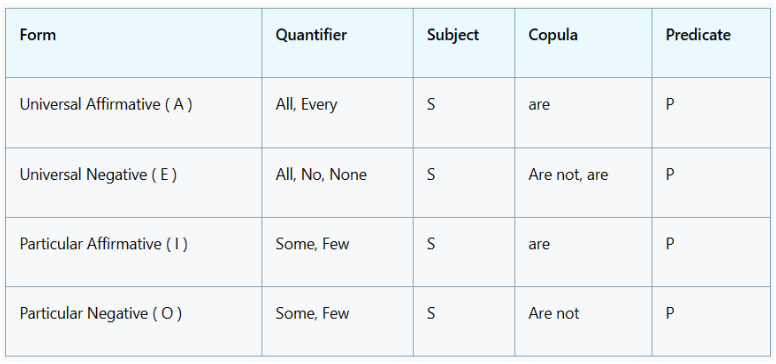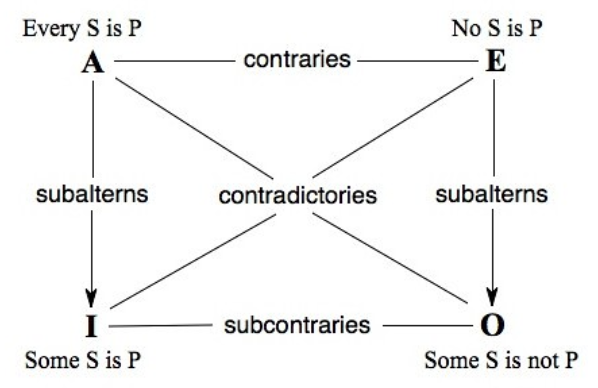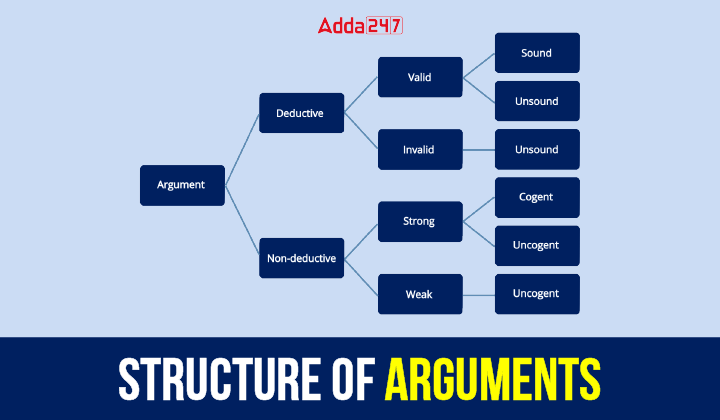Table of Contents
Logical Reasoning is an important component of Paper 1 in the UGC NET Exam, testing candidates’ ability to analyze, evaluate, and construct well-formed arguments. A strong grasp of argument structure—identifying premises, conclusions, and underlying assumptions—is essential for solving questions on logical sequences, analogies, syllogisms, and critical reasoning. This article breaks down the key elements of argumentation in UGC NET Logical Reasoning.
Structure of Arguments in Logical Reasoning
In logical reasoning, arguments play a fundamental role in evaluating the validity and soundness of reasoning presented in a statement or passage. An argument is a set of statements, where one statement (the conclusion) is supported by one or more other statements (the premises). Understanding the structure of arguments is crucial for assessing their logical coherence and validity. In logical reasoning, the structure of an argument consists of three parts: the conclusion, premises, and assumptions. The conclusion is the main idea, the premises provide supporting evidence, and the assumptions are implicit supporting elements.
- Premises: Premises are the statements provided as evidence or reasons to support the conclusion. They are the foundation upon which the conclusion is built. Premises are assumed to be true within the context of the argument.
- Conclusion: The conclusion is the main statement that the argument aims to establish or prove. It’s the claim that the premises are meant to support. The conclusion is what the arguer wants the audience to accept based on the provided premises.
Meaning of Argument
The structure of a logical argument is based on a collection of statements, known as premises, from which a logical conclusion is derived. The conclusion is supported by the premises. Thus, the argument consists of both premises and the conclusion that is inferred from them.
For example:
Premises:
- All men are mortal.
- Socrates is a man.
Conclusion:
- Socrates is mortal.
In the given scenario, the first two statements are referred to as premises, and the last statement is identified as the conclusion. When taken together, these statements form an argument. The standard structure of the argument follows the sequence of premise 1, followed by premise 2, and concluding with the derived conclusion.
Forms of Argument
The structure of argument can be further divided into three categories namely deductive, inductive, and abductive.

Deductive Argument:
- A deductive argument is a type of reasoning where the conclusion logically follows from the premises.
- It aims to provide conclusive evidence or proof for the truth of the conclusion.
- In deductive reasoning, if the premises are true, then the conclusion must also be true.
- Deductive arguments are characterized by their validity, which means that the conclusion necessarily follows from the premises.
Here’s an example:
- Premise 1: All mammals are warm-blooded animals.
- Premise 2: A whale is a mammal.
- Conclusion: Therefore, a whale is a warm-blooded animal. In this deductive argument, if we accept the truth of the premises, the conclusion must also be true.
Inductive Argument
- An inductive argument is a type of reasoning where the conclusion is based on observed patterns, trends, or evidence.
- It aims to establish a probable or likely truth of the conclusion.
- Unlike deductive reasoning, inductive arguments do not provide absolute certainty. Instead, they rely on the strength of the evidence to support the conclusion.
Here’s an example:
- Premise 1: Every cat I have seen has fur.
- Premise 2: Therefore, all cats have fur.
- In this inductive argument, the conclusion is based on observed instances, but it does not guarantee that every cat in existence has fur. The conclusion is likely, but it’s possible that there could be exceptions.
Abductive Argument (or Hypothetico-Deductive Argument):
- Abductive reasoning is a form of inference that involves generating the best possible explanation for a given observation or set of evidence.
- It seeks to identify the most plausible hypothesis to account for the facts.
- Abductive reasoning often follows a pattern known as the hypothetico-deductive method, which involves proposing a hypothesis and then making predictions based on that hypothesis.
- These predictions are then tested to evaluate the validity of the hypothesis.
Here’s an example:
- Observation: The ground is wet.
- Hypothesis: It rained last night.
- Prediction: If it rained last night, there should be puddles on the streets.
Meaning of Categorical Proposition
Categorical propositions express relationships between categories using a subject and predicate connected by “is” or “is not.” They have four standard forms:
- “All S are P,”
- “No S are P,”
- “Some S are P,”
- “Some S are not P.”
Structure of a Categorical Proposition
The structure of a categorical proposition consists of four elements: the subject term, the predicate term, the copula, and the quantifiers. These components can be described as follows:
- Subject Term: It refers to the first class or category mentioned in the proposition.
- Predicate Term: It represents the second class or category mentioned in the proposition.
- Copula: This is a verb that connects or links the subject and predicate terms.
- Quantifiers: These are used to quantify or specify the subject and predicate terms.
For example, let’s consider the proposition “All cats are mammals.” In this proposition, the subject term is “cats,” the predicate term is “mammals,” the copula is “are,” and the quantifier is “all.”
Properties of categorical propositions:
The properties of a Categorical Proposition can be understood through the following explanations:
- Quantity: The quantity property of a categorical statement is determined by the quantifier used, such as “all,” “some,” “no,” etc. It indicates the extent to which the subject class is included in the predicate class. Quantity can be either affirmative or negative.
- Quality: The quality of a proposition is determined by whether it asserts or denies the overlap between the classes. It can be affirmative or negative.
- Affirmative: An affirmative proposition is one that asserts or confirms the overlap between the classes.
- Negative: A negative proposition is one that denies the overlap between the classes.
- Distributed: A proposition is said to be distributed when it refers to the entire class.
- Undistributed: A proposition is considered undistributed when it refers to only a section or part of a class, rather than the whole class.
Types of a categorical proposition
Categorical propositions can be classified into four types, which are described as follows:
Universal Affirmative (denoted by A):
- This type of proposition considers the entire class and affirms the overlap of the classes. It states that every element of the subject class is also a member of the predicate class.
- The structure of this proposition is “All S is P,” where S represents the subject and P represents the predicate.
- For example, All cats are mammals.
Universal Negative (denoted by E):
- This type of proposition considers the entire class but denies the overlap of the classes.
- It states that no member of the subject class is part of the predicate class. The structure of this proposition is “No S is P.”
- For example, No cats are dogs.
Particular Affirmative (denoted by I):
- This type of proposition focuses on a section or subset of the class, rather than the entire class, but still affirms the overlap of the classes.
- It states that some members of the subject class are part of the predicate class, without specifying the entire subject class.
- The structure of this proposition is “Some S are P.”
- For example, Some dogs are black.
Particular Negative (denoted by O):
- This type of proposition also focuses on a section or subset of the class, not the entire class, but denies the overlap of the classes.
- It states that some members of the subject class are not part of the predicate class.
- The structure of this proposition is “Some S is not P.”
- For example, Some cats are not black.

Categorical Syllogism
Categorical syllogism is a logical argument consisting of three categorical propositions that form two premises and a conclusion. Each proposition has a subject, a predicate, and a copula connecting them. Here’s a brief explanation of categorical syllogism with an example:
A categorical syllogism follows the structure:
- Major Premise: It states a relationship between the major term (predicate) and the middle term (common term) in the conclusion.
- Minor Premise: It states a relationship between the minor term (subject) and the middle term in the conclusion.
- Conclusion: It logically deduces the relationship between the major term and the minor term.
Example of a categorical syllogism:
- Major Premise: All humans are mortal. (All S are P)
- Minor Premise: All philosophers are humans. (All M are S)
- Conclusion: Therefore, all philosophers are mortal. (All M are P)
In this example, the major term is “mortal,” the minor term is “philosophers,” and the middle term is “humans.” The major premise establishes the relationship between “humans” and “mortal,” while the minor premise establishes the relationship between “philosophers” and “humans.” Based on these premises, the conclusion deduces that “philosophers” are also “mortal.”
Classical square of opposition
The square of opposition is a logical inference drawn from propositions that share the same terms but differ in terms of quality and quantity. It is necessary for propositions in a formal opposition to have identical terms. The square of opposition reveals the logical inferences that can be made from one type of proposition (A, E, I, or O) to another. There are four types of relationships depicted in the square of opposition, which are explained in detail below:
Contradictory:
- Contradictory relationships exist between A and O propositions, as well as between E and I propositions.
- These relationships involve propositions that differ in both quality and quantity. If one proposition is true, the other is definitely false.
- For example: A – All dogs are mammals. O – Some dogs are not mammals. If A is true, O cannot be true, and the same applies to the relationship between E and I propositions.
Subalterns:
- Subaltern relationships exist between propositions that share the same quality but differ in quantity.
- This means that the truth of the propositions follows from A to I and from E to O, but not vice versa.
- Falsification of the proposition follows from I to A and from O to E.
- For example: A – All dogs are mammals. I – Some dogs are mammals. If A is true, I is also true, and similarly, if E is true, O is also true. If I is false, A is also false, and if O is false, E is also false.
Contraries:
- Contraries are propositions that are opposite to each other.
- They have the same quantity but differ in quality, and both are universal in quantity. If one is true, the other must be false, so they cannot both be true.
- However, when one is false, the truth value of the other proposition remains undetermined.
- For example: A – All dogs are mammals. E – No dogs are mammals. If A is true, E is false, but if A is false, the truth status of E is undetermined.
Sub-Contrary:
- Sub-contrary relationships exist between propositions that differ in quality but share the same quantity.
- This relationship occurs between particular affirmative and particular negative propositions. If one is false, the other must be true, so they cannot both be false.
- However, when one is true, the truth value of the other proposition remains undetermined.
- For example: I – Some dogs are mammals. O – Some dogs are not mammals. If I is false, O is true, but if I is true, the truth status of O is undetermined.

The classical square of opposition aids in understanding logical relationships and making deductions based on categorical propositions. It helps assess argument validity and draw inferences.
Download Structure of Arguments Study Notes PDF
The direct link to download Download Structure of Arguments Study Notes PDF has been provided below. Check the pdf to download in details with key elements of Structure of Arguments.




 UGC NET Teaching Aptitude Questions Answ...
UGC NET Teaching Aptitude Questions Answ...
 What is Soil Pollution - Causes, Effects...
What is Soil Pollution - Causes, Effects...
 UGC NET Philosophy Syllabus 2025 PDF Dow...
UGC NET Philosophy Syllabus 2025 PDF Dow...












